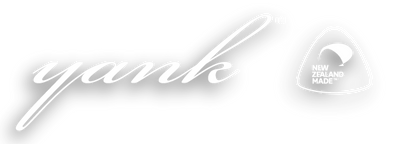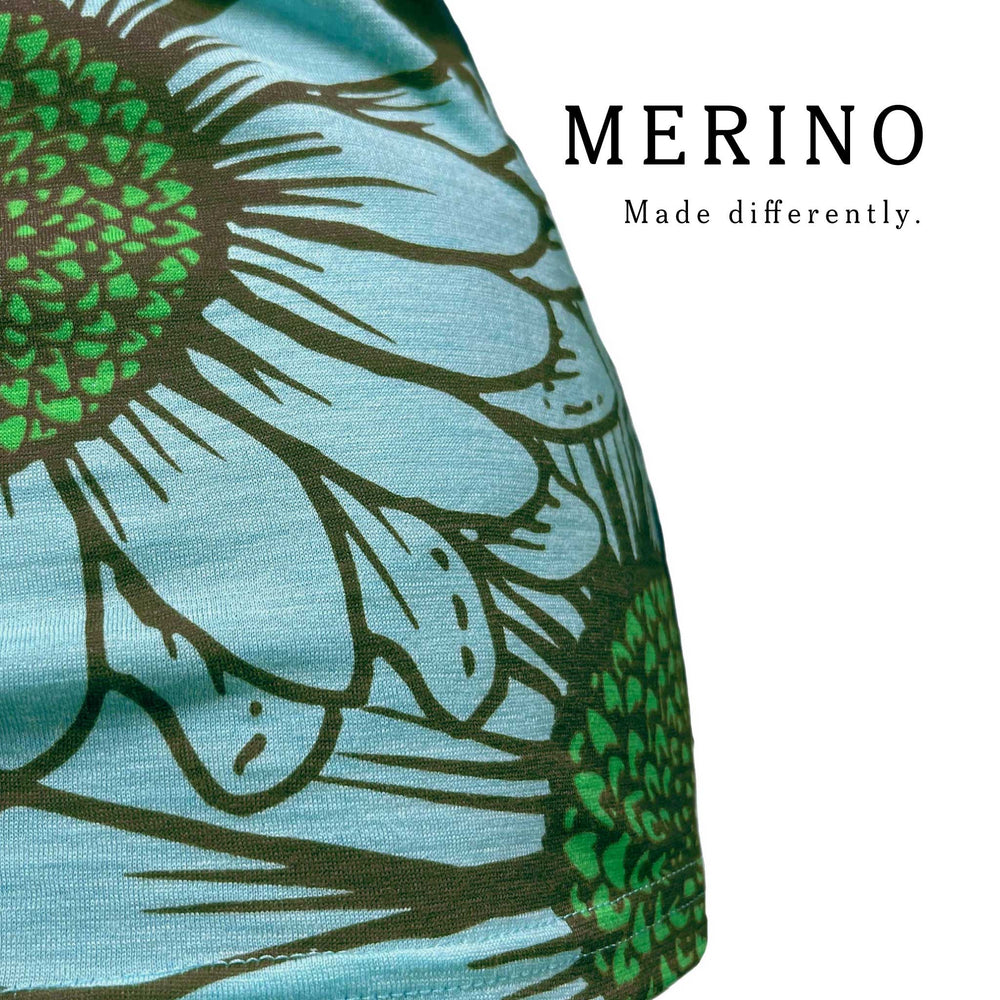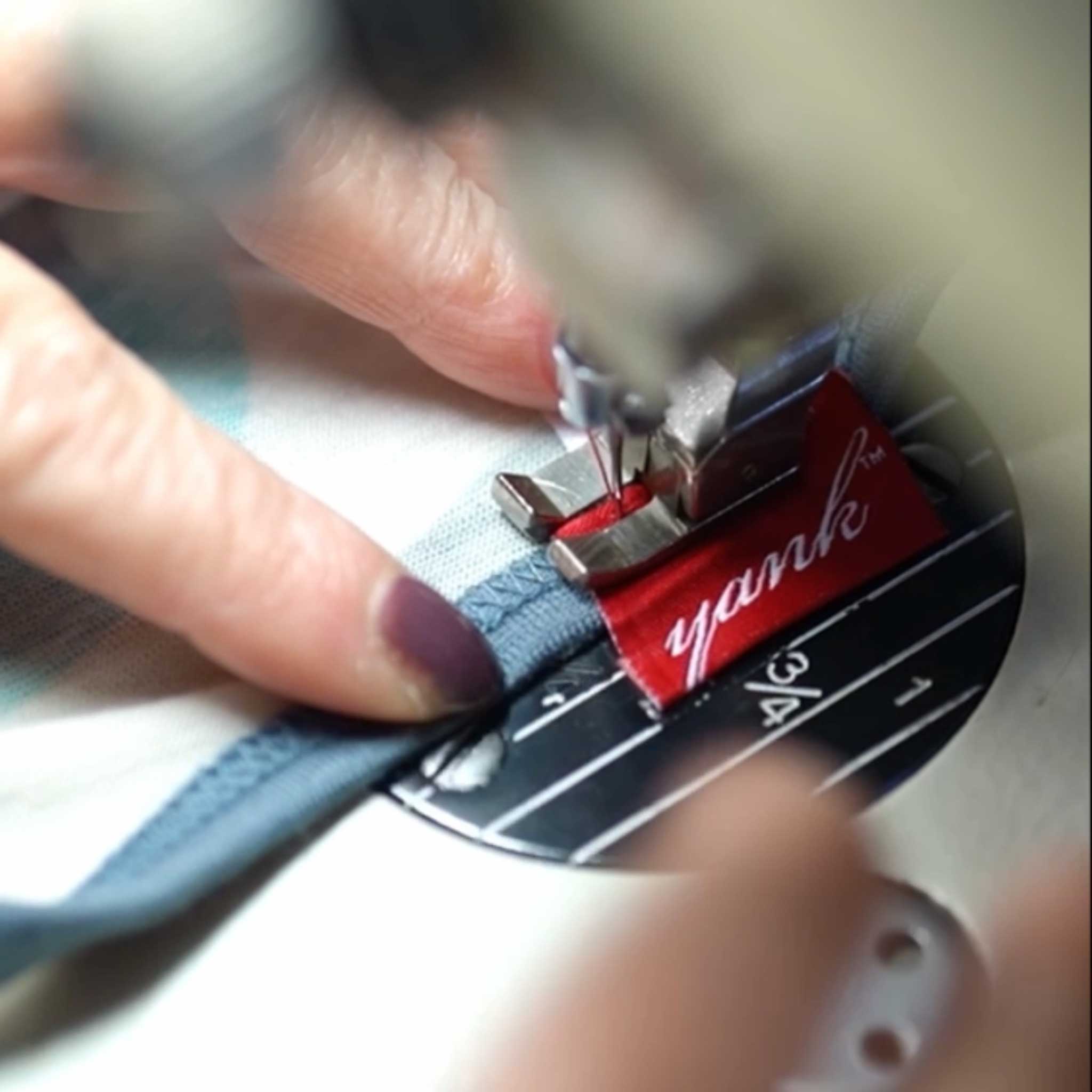
Sustainability.
A big word.. with very big meaning. Not a subject for any 'brand' to talk about lightly knowing that every form of manufacturing has an impact on our environment and the health of the earth.
In the next few paragraphs I will tell you a little of the back story around how Yank began, and how I ended up falling in love with Nuyarn Merino fabrics.
**If you would like to skip the back story - you can scroll to where the text returns to black and the Nuyarn-Sustainability content begins. **
A bit of History about Yank:
Yank initially started in 2012. Admittedly a naive and recently retired athlete, I started out pursuing the latest performance fabrics available at that time which were synthetically made. I learned a great deal about polyester dye-sublimated garments while having a few colourful tops made (all of which were designed, printed, cut and sewn in New Zealand). Going through this process was a real eye opener. The day I was on location where dye-sublimation was being done I was shocked to see the process happen first hand. The waste by product was much larger than what I had expected, and the atmosphere surrounding the workspace was heavy with the smells of chemicals and hot plastic.
Needless to say that chapter of Yank was educational yet brief. By the end of 2012 I learned that there was new fabric technology in the mix - and potential to print directly onto fabrics which were a synthetic merino blend. In early 2013 I had to shelve my project to prioritize being a mum.
Fast forward a few years, by the middle of 2017 it felt like it was time to dust off my project to start again. My little people started sleeping more consistently through the night, and my evenings were spent doing research on different types of print-friendly fabric and how they are made. I read about Rayon/Lyocell/Tencel/Viscose/Bamboo.. all of which require a lengthy chemical process to become fabric.
In the end I kept coming back to all of my 'old faithful' merino shirts which had become the norm for every day wear carting kids about, squeezing in a run or a bike ride, keeping up with the 'busy' which comes with having a family. Not overly colourful.. but way less smelly than all of my old running kit which I had thrashed for years. The direction my project needed to go finally started to make sense.. I just needed to figure out where I could get some merino fabric and figure out how to cover it in colourful print.
Super earth friendly. Merino is a naturally grown, carbon sequestering fibre. There is no chemical process required to produce its' rock star performance for thermo-regulation and odour resistance. Looking to see what Merino fabrics were being made in New Zealand I came across this article which announced the last working circular knitting company had moved offshore. Not the news that I wanted to read, but the latter half of the article mentioned "world first technology" and "demand from world-leading performance brands". Something they referred to as 'Nuyarn'.
I wanted to know more. It took a couple of months of scratching around, but I finally managed to get my hands on a bit of this elusive Nuyarn merino fabric. I made myself a couple of shirts which became my new 'mum-uniform'.

[ There are several chapters that could be written between that day and now, though I will save that for another time. ]
It is now July 2022. I have been wearing Nuyarn merino fabrics practically full time for more than 4 years and Yank launched the first full colour print Nuyarn Merino collection on 25th July 2019. Having sensitive skin, Nuyarn is the first merino fabric that I have been able to wear every day without feeling itchy. My Nuyarn tops can go for days (and sometimes weeks) without needing to be washed when aired properly between wears. I have worked out that the singlet/long sleeve layering combo now means I can easily manage my rather fickle body temperature. I have also managed to spend a number of big days in the hills without heavy build up of stink in the fabrics.
So.. What makes Nuyarn so much better than other traditionally produce Merino fabrics?
Well... Nuyarn Technology makes it possible for wool fabric to perform as closely as possible to the way it does in nature. It unleashes wool's natural abilities in moisture management and thermo-regulation to rival or exceed even modern synthetic alternatives.
Nuyarn technology ✨magic✨ goes way deeper than how the fabric is knitted. This magic is directly related to how the merino fibres are put together to create the yarn (or thread). The producers of Nuyarn have stripped the fabric making process right back to its' foundations. They pushed aside all traditional forms of thread making ~ and devised a way to align merino fibres along side each other and weave them around a fine nylon core. They have built the technology and machines from the ground up. Minimizing twist. Minimizing the excess protrusion of merino fibre ends (which cause 'itch'). Reducing the amount of raw materials required to produce every lineal metre of fabric.. and increasing the speed at which yarns are able to be made which has reduced the amount of energy required for production.
Hear is a brilliantly informative video which has been produced by Nuyarn. In this video Andy Wynne [Founder of Nuyarn] talks through the benefits of Nuyarn Technology, how it is made, how it differs from traditional yarns, along with many of the things that Nuyarn are doing in respect to our environment. This clip is about 15 minutes, but is worth making a cuppa and have a watch while Andy talks about the features which this innovative world-first technology has unleashed while at the same time utilizing the natural performance of merino wool.
Points of interest:
2min - How traditional merino yarn is made.
3min 17sed - The structure of how Nuyarn is made.
4min 30sec - Fabric elasticity and how Nuyarn has natural stretch.
6min 20sec - The durability of merino fabrics.
7min 27sec - Why traditional spun garments twist in the wash.
8min 22sec - Seam strength, testing, and durability.
9min 50sec - Sustainability and Carbon footprint of Nuyarn manufacturing.



